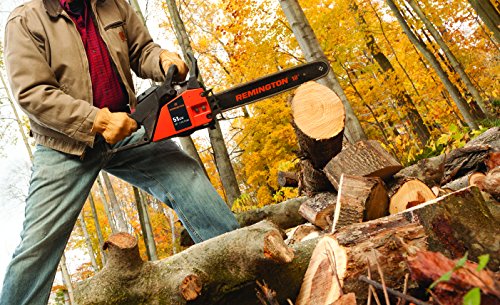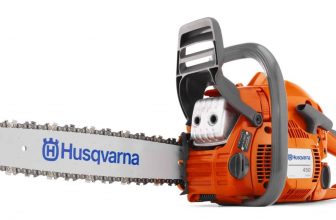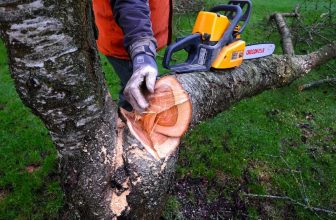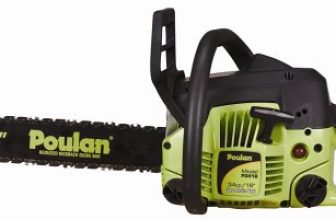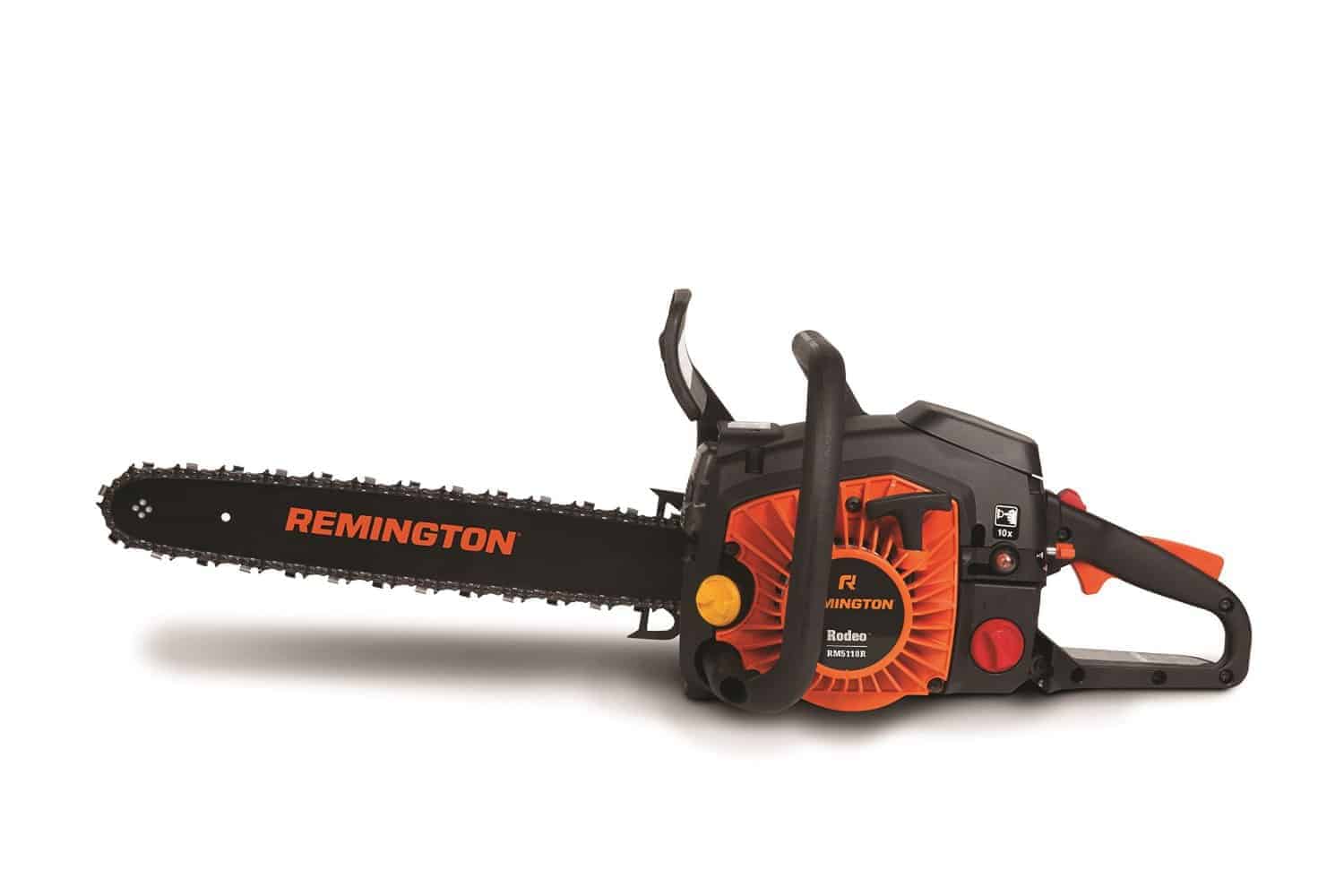
This post may contain affiliate links. This small commission costs you nothing and allows us to write more great power tool reviews for you.
Chainsaw Buyer’s Guide
A good chainsaw is considered to be one of the most valuable and important tools that a handyman or homeowner can have. These saws reduce the time, money, and energy spent on many home and outdoor projects. Whether it is clearing fallen trees after a storm, stocking up on firewood for the Winter, safely removing dead tree branches at risk of falling, or pruning hedges and small trees, having a dependable chainsaw around will make these jobs much easier.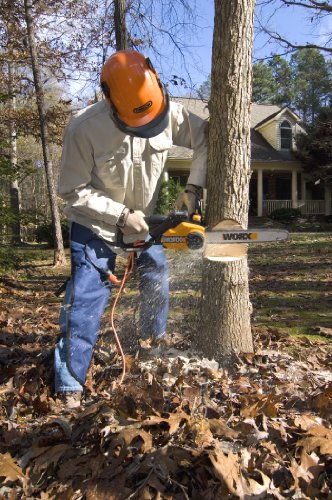
Chain saws vary greatly in size, shape, power, type, features, pricing and models. So, it is extremely important that you invest your money in the right tool that will best fit your needs.
Chainsaws range from small electric models to large gas powered models and all have a vast array of features to offer, making the purchasing decision even more difficult.
Years ago, larger gas-powered chainsaws were the most popular on the market, but that is not necessarily true anymore. Now a days, powerful electric models have emerged and have found their way into many homes, replacing the traditional, heavier and bulkier gas models of the past. However, not all jobs can be handled with an electric chain saw, as gas-powered ones are still the best choice for heavy-duty jobs.
So, before you go shopping, be sure to carefully consider your cutting needs and the features you would like in a chain saw. Take a look at some of the most highest rated chainsaw models below for our buying recommendations and utilize the information in our buyer’s guide to help find the saw the best chainsaw for your needs.
Click here for more information on chainsaws
Purchasing a chainsaw is not a process to be taken lightly. It should be a long term investment and is not typically an inexpensive one either! Chainsaws vary drastically in size, shape, weight, features, models, types, and capabilities and you want to make sure that you are purchasing the one that is perfect for your individual needs.
It’s hard to know what to purchase if you don’t know what your options are. Below is some helpful information on the various types of chainsaws as well as important features that should assist in your decision making process.
In general, more power will probably result in more money but is worth the investment if your job requires brute strength and power! Finding that perfect balance between power, size, and price is difficult but first you’ll want to start by determining exactly what type of chainsaw will fit your needs.
Chainsaw Types
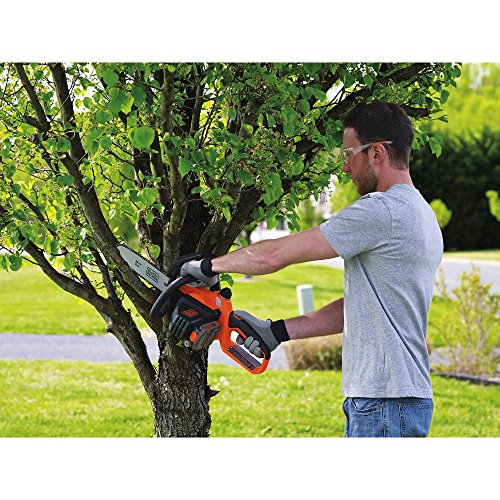 The two main types of chainsaws that you have to choose from are gas-powered or electric saws. There are pros and cons for each type and each type comes with its own features and issues to consider. Price is certainly a factor in any purchasing decision and that holds true to chainsaw shopping as well but your choice between gas or electric most likely will come down to your intended use. Depending on the type of work you plan to do as well as your location and access to a power source will be the determining factor in whether you go with an electric or gas-powered chain saw.
The two main types of chainsaws that you have to choose from are gas-powered or electric saws. There are pros and cons for each type and each type comes with its own features and issues to consider. Price is certainly a factor in any purchasing decision and that holds true to chainsaw shopping as well but your choice between gas or electric most likely will come down to your intended use. Depending on the type of work you plan to do as well as your location and access to a power source will be the determining factor in whether you go with an electric or gas-powered chain saw.
Consider where and what you will be using your saw for and take a look at the advantages and disadvantages of each type below.
Gas-Powered Chainsaws
Gas-powered chainsaws tend to be the most popular choice between the two types. Generally speaking, gas saws will offer a smoother, faster cut than electric models. Gas powered saws offer more torque, added power, and faster chain speeds than their electric counterparts. Reliability, dependability, power, and mobility are key advantages to gas chain saws.
The disadvantages of gas powered chainsaws are few but definitely worth considering when making your purchase. Gas saws are heavier, bulkier, and harder to handle than the smaller electric models. They tend to run noisier than electric saws and usually require more maintenance and upkeep as well. Although many models now include emission lowering features, gas-powered saws still emit some exhaust fumes and are therefore less environmentally friendly than an electric saw.
Gas powered chainsaw engines may require more work to get started, but many models are now coming equipped with improved starting features that help minimize that issue. Typical chain bar lengths for the gas-powered models are 16”-18” for personal use and longer for professional use.
See all gas chainsaw models here
Electric Chainsaws
Electric chain saws are ideal for smaller, light-duty jobs around the home such as pruning, trimming, and small cutting jobs. They are typically quieter than the gas-powered saws and tend to run smaller and lighter. Electric models are easier to handle, easy to start, and require less upkeep and maintenance than gas-powered models. Generally speaking, electric models are also less expensive than gas ones.
Something else to consider when purchasing an electric powered chainsaw is the different types of electric models. Electric saws come in either corded or cordless varieties and depending on the work you are doing and where the nearest power source is, one may be a better choice than the other. The corded models do require a specific type of extension cord to ensure proper use and performance; usually a 12 to 14 gauge cord will do the trick. Cordless models run off a battery allowing for greater mobility but the cordless models can sometimes be pricier than gas-powered models.
Obvious disadvantages to electric saws would be limited mobility as the corded models would need to remain close to a power source and the cordless chainsaws usually have a shorter run time per charge than a tank of gas would get you on a gas powered model. Electric models have slower blade speeds and cannot be used for heavy duty jobs.
Typical chain bar lengths for electric chainsaws are 14”-16” for corded models and 12” for cordless battery powered saws.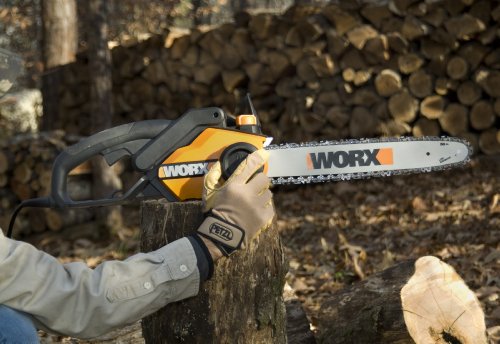
The decision between gas and electric usually comes down to the exact type of work you will be doing and your location in reference to a power source. If you are planning a long day in the woods cutting down some large trees, you’re going to want to invest in a gas-powered model. However, if you just need to have a dependable, easy to use saw for small jobs around the home then an electric saw may be the perfect choice for you.
See all electric chainsaw models here
Size of Cutting Bar
In addition to choosing the appropriate type of chain saw you will also need to consider the size of the cutting bar that you will need. Different sized bars are used for different types of jobs so you may need more than one size depending on the kind of work you intend to do with your saw.
Most cutting bars range from as small as 8” to as large as 42”. For most small to medium duty jobs, general carpentry work, and simple pruning or trimming a 14” or shorter bar should work fine. If you do more heavy duty work, a lot of tree cutting, or are working with larger diameter wood, you will want to invest in a 16”-18” or larger bar.
Larger bars tend to be heavier, harder to handle and maneuver, less predictable, and potentially more dangerous. If you aren’t sure exactly what size to use or have very little experience with handling these tools, you may want to start with a smaller bar and perform only the work you can do safely until you get more comfortable with handling a larger bar.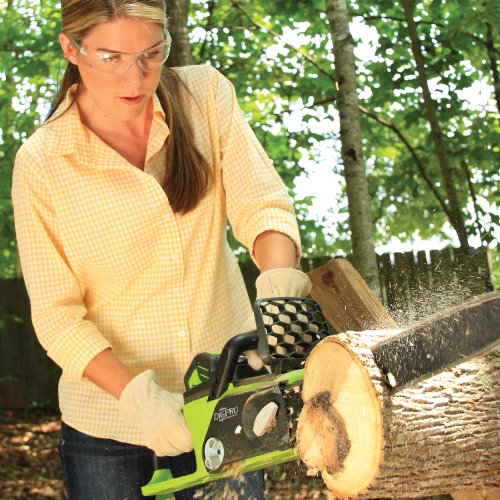
Chainsaw Features
When it comes to chainsaw shopping, there are many different features to be considered. Safety features are generally the most important to look for when purchasing a new chain saw. However, many saws now include added features to help with convenience, added comfort, durability, ease of use, and even the reduction of environmentally harmful emissions.
Below is a list of the most common features included in many saws on the market now and is what you will want to look for when making your next chain saw purchase.
Kickback Reduction Features
Safety should be a main concern when using a chainsaw and most models include various features to help reduce the risk of saw kickbacks.
- Kickback Reduction Chain – This is a chain that contains extra guard links as well as a less-aggressive cutting profile that helps prevent the chain from taking large bites.
- Kickback Reduction Bar – This is a bar with a narrow tip or nose that limits the cutting area, therefore preventing most kickback.
- Bar-tip Guard – The bar-tip guard is a steel attachment covering the tip (or nose) of the bar.
- Chain Brake – The chain break feature is designed to stop the chain almost instantly when encountering an abrupt movement and/or impact as well as whenever the front hand guard is pushed forward or if the saw kicks back.
Other Safety Features
Aside from kickback risk reduction, there are other features that further assist with keeping you safe while using your saw.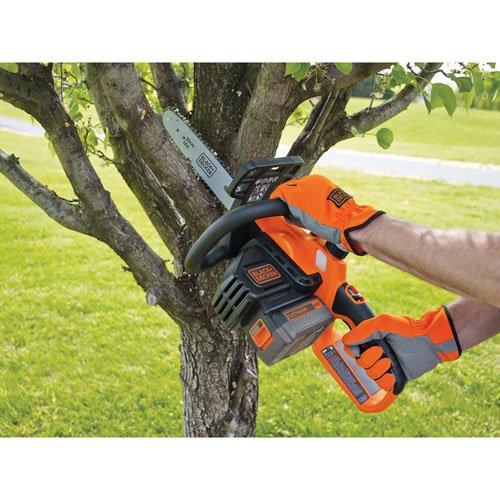
- Chain Catcher – A chain catcher consists of a metal extension underneath the guide bar that prevents a thrown chain from flying back and hitting the user.
- Muffler – Mufflers mainly serve to reduce noise. Additionally, many mufflers on gas-powered saws have a shield installed that helps protect fingers and hands from the heat, reducing the risk of burns.
- Case, Sheath, Cover – Purchasing a case, sheath, or cover for the bar and chain helps prevent against potential injury when carrying the saw and could also help contain oil leaks from the chain. A carrying case for the entire saw also provides protection for both the user and the saw as well as added convenience in transporting.
Comfort and Convenience Features
Once your safety is ensured, it is time to consider your comfort when using the saw and various other convenience related features.
- Wraparound Handle – A wraparound front handle provides a more comfortable grip and helps ease the horizontal cutting required for some jobs.
- Anti-Vibration – Anti-vibration features include metal springs or rubber bushings between the handle and the bar, chain, and engine. These features minimize vibrations and reduce the risk of fatigue on longer jobs.
- Spring Assist Start – A spring assist starting feature reduces the pull force required for starting the saw.
- Automatic Chain Oiler – Even low-priced saws now include this must-have device, which lets you keep cutting without having to stop and pump a plunger to oil the cutting bar–and keep both hands firmly on the saw. A well-oiled bar and chain keep both from wearing prematurely and overheating, which can lead to a broken or thrown chain. An automatic chain oiler helps make cutting both safe and efficient.
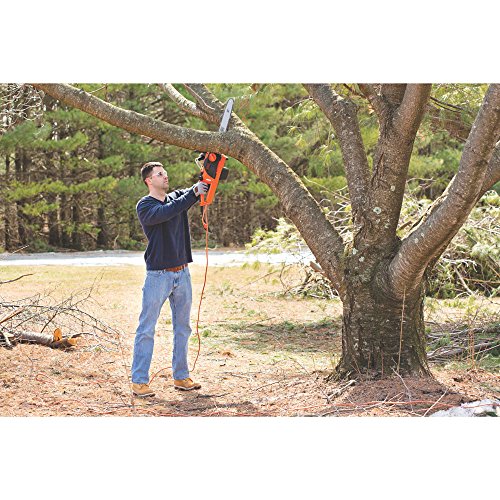
- Tool-less Chain Adjuster – A hand-operated mechanism so you can change the tension of the chain without using a screwdriver or wrench. It also can improve overall safety by facilitating proper adjustment quickly and easily. Quick-adjust chains and tool-less chain adjustment allow you to change the cutting chain tension easily.
- Visible Bar-Oil Gauge – This feature consists of a clear tank or viewing strip that creates the ability to check bar and chain oil levels at any time.
With the right information and knowledge of your intended use, finding the best chainsaw for you can actually be fun and easy. Determine your needs, pick your style, chose your features and then saw away!

